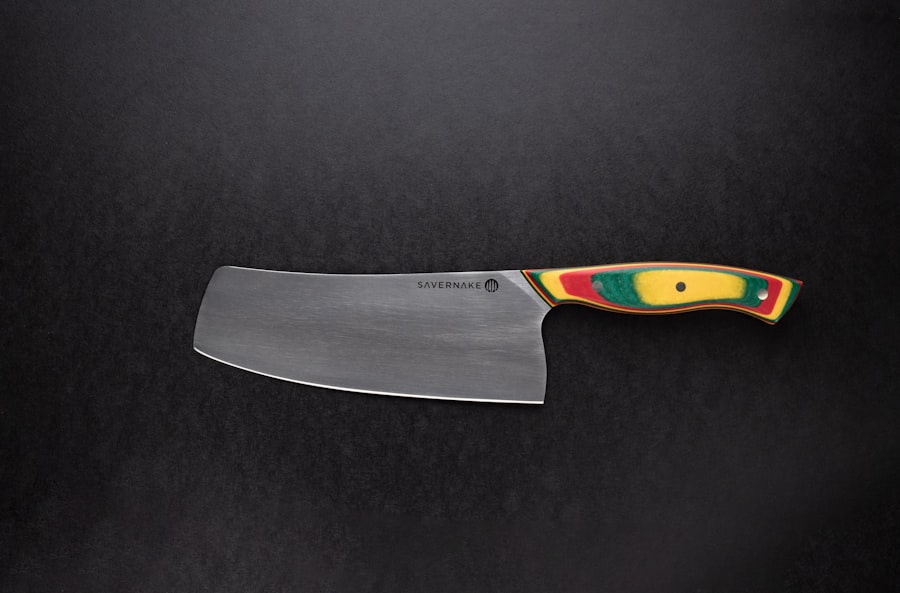Delicious Turnips: A Simple Guide to Cooking Them

Turnips are a versatile root vegetable that have been enjoyed by cultures around the world for centuries. They have a long history and are believed to have originated in Europe and Asia. The ancient Greeks and Romans were known to cultivate turnips, and they were a staple food in medieval Europe. Today, turnips are still widely used in various cuisines and can be found in dishes ranging from soups and stews to salads and side dishes.
In different cuisines, turnips are used in a variety of ways. In European cuisine, they are often boiled or roasted and served as a side dish or added to stews and casseroles. In Asian cuisine, turnips are commonly used in stir-fries and pickled for added flavor. In Middle Eastern cuisine, turnips are often used in salads and dips. The versatility of turnips makes them a popular choice for cooks looking to add depth and flavor to their dishes.
Nutritional Benefits of Turnips for a Healthy Diet
Turnips are not only delicious but also packed with essential nutrients that can benefit your health. They are low in calories and fat, making them a great choice for those looking to maintain or lose weight. Turnips are also a good source of fiber, which can aid in digestion and promote feelings of fullness.
In terms of vitamins and minerals, turnips are rich in vitamin C, which is important for immune function and collagen production. They also contain vitamin K, which is essential for blood clotting and bone health. Additionally, turnips provide minerals such as potassium, magnesium, and calcium, which are important for maintaining healthy blood pressure and strong bones.
Choosing and Buying Fresh Turnips for Cooking
When selecting fresh turnips, there are a few things to keep in mind to ensure you choose the best ones for cooking. Look for turnips that are firm and heavy for their size, as this indicates freshness. Avoid turnips that have soft spots or blemishes, as these may be signs of decay.
It’s also important to choose turnips with vibrant green tops, as this indicates freshness. The greens should be crisp and not wilted. If the greens are still attached to the turnip, make sure they are not yellowed or dried out.
Before cooking, it’s important to store turnips properly to maintain their freshness. Remove the greens from the turnips and store them separately in a plastic bag in the refrigerator. The turnips can be stored in a cool, dark place such as a pantry or root cellar. They should last for several weeks if stored properly.
Preparing Turnips: Cleaning, Peeling, and Cutting Techniques
| Technique | Description | Time Required | Difficulty Level |
|---|---|---|---|
| Cleaning | Removing dirt and debris from turnips | 5-10 minutes | Easy |
| Peeling | Removing the outer skin of turnips | 10-15 minutes | Moderate |
| Cutting | Cutting turnips into desired shapes and sizes | 10-20 minutes | Moderate |
Preparing turnips for cooking is a simple process that involves cleaning, peeling, and cutting them into the desired shape. Here is a step-by-step guide on how to prepare turnips:
1. Start by rinsing the turnips under cold water to remove any dirt or debris. Use a vegetable brush if necessary to scrub away any stubborn dirt.
2. If the turnips have greens attached, remove them by cutting off the stems close to the top of the turnip. The greens can be saved for later use.
3. To peel the turnips, use a vegetable peeler or a sharp knife. Start at the top of the turnip and work your way down, removing the outer skin in thin strips.
4. Once peeled, cut off the top and bottom of the turnip to create a flat surface for stability.
5. Depending on your recipe, you can cut the turnips into cubes, slices, or wedges. Use a sharp knife to cut them into your desired shape.
Simple Turnip Recipes for Beginners: Roasting, Boiling, and Mashing
If you’re new to cooking with turnips, there are several simple recipes that can help you get started. Here are a few easy turnip recipes for beginners:
1. Roasted Turnips: Preheat your oven to 400°F (200°C). Toss peeled and cubed turnips with olive oil, salt, and pepper. Spread them out on a baking sheet and roast for 25-30 minutes, or until they are tender and golden brown.
2. Boiled Turnips: Peel and cube turnips, then place them in a pot of boiling water. Cook for 10-15 minutes, or until the turnips are fork-tender. Drain the water and season with butter, salt, and pepper.
3. Mashed Turnips: Peel and cube turnips, then boil them in salted water until tender. Drain the water and mash the turnips with a potato masher or fork. Add butter, milk, salt, and pepper to taste.
Creative Turnip Dishes for Adventurous Cooks: Turnip Fries, Chips, and Gratin

For those who are more adventurous in the kitchen, there are plenty of creative ways to incorporate turnips into your dishes. Here are a few unique turnip recipes to try:
1. Turnip Fries: Peel and cut turnips into thin strips resembling French fries. Toss them with olive oil, salt, pepper, and any other desired seasonings such as garlic powder or paprika. Spread them out on a baking sheet and bake at 425°F (220°C) for 20-25 minutes, or until they are crispy and golden brown.
2. Turnip Chips: Thinly slice peeled turnips using a mandoline or sharp knife. Toss the slices with olive oil, salt, and any desired seasonings such as rosemary or thyme. Arrange them in a single layer on a baking sheet and bake at 350°F (175°C) for 15-20 minutes, or until they are crispy.
3. Turnip Gratin: Peel and thinly slice turnips, then layer them in a greased baking dish. In a saucepan, heat butter and flour to make a roux. Gradually whisk in milk and bring to a simmer. Remove from heat and stir in grated cheese, such as Gruyere or Parmesan. Pour the cheese sauce over the turnips and bake at 375°F (190°C) for 30-35 minutes, or until the top is golden brown and bubbly.
Turnip Greens: A Delicious and Nutritious Addition to Your Meal
While turnips are often the star of the show, don’t overlook their greens. Turnip greens are not only delicious but also packed with nutrients. They are an excellent source of vitamins A, C, and K, as well as folate and calcium.
To cook turnip greens, start by washing them thoroughly under cold water to remove any dirt or grit. Remove any tough stems and tear the leaves into smaller pieces. Heat a large pot over medium heat and add a small amount of oil or butter. Add minced garlic or diced onions for added flavor, then add the turnip greens to the pot. Cook for 5-7 minutes, stirring occasionally, until the greens are wilted and tender. Season with salt, pepper, and any other desired seasonings.
Turnip Storage and Preservation: How to Keep Them Fresh for Longer
To keep turnips fresh for longer, it’s important to store them properly. If you have purchased turnips with their greens still attached, remove the greens before storing. The greens can be stored separately in a plastic bag in the refrigerator.
For the turnips themselves, they can be stored in a cool, dark place such as a pantry or root cellar. Make sure to remove any dirt or debris before storing. Turnips can last for several weeks if stored properly.
If you have an abundance of turnips and want to preserve them for later use, there are a few methods you can try. One option is to blanch and freeze the turnips. Start by peeling and cutting the turnips into your desired shape. Bring a pot of water to a boil and blanch the turnips for 2-3 minutes. Remove them from the boiling water and immediately transfer them to an ice bath to stop the cooking process. Once cooled, drain the turnips and place them in freezer-safe containers or bags. They can be stored in the freezer for up to 6 months.
Another option for preserving turnips is pickling. Peel and slice the turnips into thin rounds or matchsticks. In a saucepan, combine equal parts vinegar and water, along with sugar, salt, and any desired spices such as mustard seeds or peppercorns. Bring the mixture to a boil, then reduce heat and simmer for 5 minutes. Pack the sliced turnips into sterilized jars and pour the hot pickling liquid over them, leaving about 1/2 inch of headspace. Seal the jars and process them in a boiling water bath for 10 minutes. The pickled turnips can be stored in a cool, dark place for up to 1 year.
Turnip Varieties and Seasonal Availability: What to Look for at the Farmers’ Market
Turnips come in various varieties, each with its own unique characteristics. Some common varieties include Purple Top, White Globe, Tokyo Cross, and Scarlet Queen. Purple Top turnips have a purple top with white flesh, while White Globe turnips are completely white. Tokyo Cross turnips are small and tender, with a mild flavor, while Scarlet Queen turnips have a vibrant red skin and sweet flavor.
The availability of turnips can vary depending on the season. In general, turnips are available year-round, but they are most abundant in the fall and winter months. Look for fresh turnips at your local farmers’ market during these seasons to ensure you are getting the best quality and flavor.
Turnips as a Tasty and Affordable Ingredient for Any Meal.
In conclusion, turnips are a versatile root vegetable that can be enjoyed in a variety of ways. They have a long history and are used in cuisines around the world. Turnips are not only delicious but also packed with essential nutrients that can benefit your health.
When selecting turnips, look for ones that are firm and heavy for their size, with vibrant green tops. Store turnips properly by removing the greens and storing them separately in the refrigerator, while keeping the turnips in a cool, dark place.
Preparing turnips is a simple process that involves cleaning, peeling, and cutting them into the desired shape. There are plenty of simple recipes for beginners, such as roasting, boiling, and mashing. For more adventurous cooks, turnips can be used to make fries, chips, and gratin.
Don’t forget about the greens! Turnip greens are nutritious and delicious when cooked properly. They can be cooked by sautéing or boiling them with garlic or onions.
To keep turnips fresh for longer, store them properly in a cool, dark place. If you have an abundance of turnips, consider blanching and freezing them or pickling them for later use.
Turnip varieties vary in color, flavor, and size. Look for fresh turnips at your local farmers’ market during the fall and winter months for the best quality and flavor.
Incorporating turnips into your diet is a tasty and affordable way to add variety to your meals. Whether you’re a beginner or an adventurous cook, turnips can be enjoyed in a variety of dishes and provide numerous health benefits. So why not give turnips a try and discover the delicious possibilities they offer?



